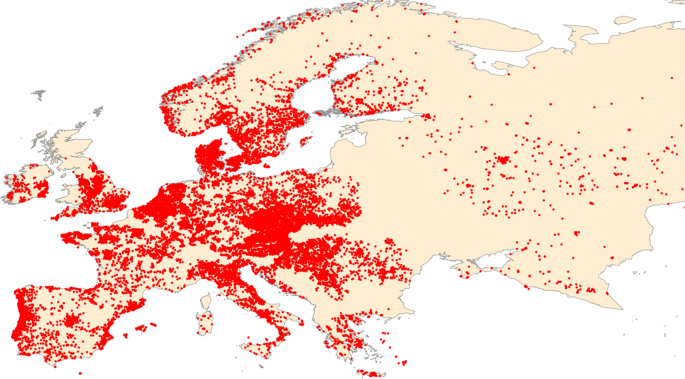All contemporary societies host different cultural and ethnic groups in their population. Increasingly diverse societies, however, do not necessarily become more tolerant of diversity. Social science research examines the behavior of individual members (Berry and Sam, 2014) and identifies ethnic and racial discrimination through field experiments in several social domains (Gaddis, 2018; Harrison and List, 2004).
Finding a job, renting an apartment, and using the sharing economy are examples of activities where discrimination is not usually directly observable. However, using fictitious applications that differ only in specific factors (e.g., ethnicity, gender, or race), research shows that minority groups face a disadvantage when accessing labor (Baert, 2018; Bertrand and Mullainathan, 2004; Kaas and Manger, 2012; Lancee et al., 2019; Midtbøen, 2016; Pager et al., 2009; Quillian et al., 2017; Zschirnt and Ruedin, 2016), housing (Auspurg et al., 2019; Diehl et al., 2013; Flage, 2018), transportation (Ge et al., 2016, Liebe and Beyer, 2020), politics (Gell-Redman et al., 2018), and the sharing economy (Edelman et al., 2017; Tjaden et al., 2018).
Discrimination is traceable across occupations, regions, and countries, and is present in a range of daily activities. Although most discrimination studies focus on social domains with economic impact (e.g., labor, housing), evidence of ethnic and racial discrimination also exists in online dating (Jakobsson and Lindholm, 2014; Potârcă and Mills, 2015), shopping (Bourabain and Verhaeghe, 2019), and sport participation (Nesseler et al., 2019).
The negative implications of discrimination in social activities rely on Granovetter’s (1973) seminal idea of the strength of weak ties. The connections and personal relationships acquired in relaxed and friendly environments may result in broader social networks that act as sources of employment (McQuaid and Lindsay, 2005), housing (van Eijk, 2010), health (Szreter and Woolcock, 2004), and socioeconomic status (Campbell et al., 1986).
Participation in social activities can provide meaningful interactions, but it requires reciprocity—a willingness of foreign members to join activities and a willingness of native members to grant access (Laurentsyeva and Venturini, 2017; Ward et al., 2001). Research quantifying daily interactions between groups frequently relies on self-report measures such as number of mutual visits (Avitabile et al., 2013) or club membership (Hainmueller et al., 2017), but such measures tend to overlook the actions of native members. Alternative measures such as ethnic geographic clustering (Constant et al., 2013) and smartphone usage (Dissing et al., 2018) suffer from similar limitations.
To focus on the actions of native members and measure ethnic discrimination, in this study we use a field experiment approach. Field experiments avoid the drawbacks of self-report measures (e.g., social desirability bias; Hofmann et al., 2005) and secondary data (e.g., omitted variable bias; Blank et al., 2004). Additionally, the method eliminates the influence of external factors such as appearance, attitude, and accent (Bertrand and Mullainathan, 2004). Accordingly, using mock email accounts with native-sounding and foreign-sounding names, we contacted amateur football (soccer) clubs in 22 European countries.
Amateur sports are supposedly an integration tool that enables social interactions between individuals with different ethnic backgrounds (Council of the European Union, 2010, 2020; Duarte et al., 2012; Elling et al., 2001; Walseth, 2008). The literature on sport participation, however, shows that ethnic minorities are less likely to participate in sports than their majority counterparts (van Haaften, 2019).
This underrepresentation is usually explained as a preference of ethnic minorities for more familiar activities and relationships with peers from their own communities (Elling and Knoppers, 2005; Peucker and Ceylan, 2017). Researchers have nonetheless called attention to discriminatory actions within the club-organized sport system (Collins, 2014). The typical use of qualitative methods and case studies prevent this research from disentangling practices of exclusion from ethnic preferences (van Haaften, 2019).
To anticipate our results, individuals with foreign-sounding names received disproportionately fewer responses from amateur football clubs (e.g., in England, “Jan” did worse than “John”). The findings redirect attention from self-segregation to collective exclusion mechanisms in daily interactions of ethnic minorities (Boustan, 2013, Crozier and Davies, 2008; Peucker and Ceylan, 2017), especially in sports (van Haaften, 2019). Amateur football may offer excellent opportunities for integration (UEFA, 2020), but we find that the system is not equally accessible to everyone.
The amateur football system operates similarly in most European countries. It is based on a network of self-organized clubs within overarching (regional) federations that organize competitions (Bottenburg et al., 2005). As the organizational structure lacks a regulated process of player admission, the task of inviting a new player normally falls to coaches, players, and other staff members.
The rules of football are universal and equally, apply to all participants. Therefore, prejudices based on ethnic, racial, or religious characteristics should be of little importance, as they cannot impact the outcome of a match. Amateur football also has the advantage of not being driven by economic interests (unlike professional sports), and in most cases, there are no limits to foreign participation.
The multi-country field experiment provides a detailed picture of discrimination in Europe, but the design does not permit a more refined analysis of the mechanisms that play a role in ethnic discrimination, mechanisms such as cultural distance (Hofstede, 2001; Schwartz, 2006; Welzel, 2013), national hierarchies (Elliker, 2012; Hobson and Sharman, 2005; Juhasz and Mey, 2013), and religion (Di Stasio et al., 2021). Nevertheless, the results from this study establish a solid foundation for future research and for individual and collective action.

